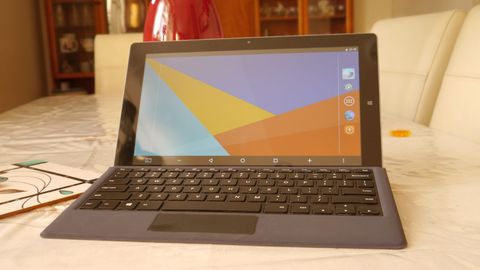Early Verdict
There’s nothing cheap feeling about the Teclast Tbook 16, and if you can live with the inherent risks associated with buying abroad, then this may well be the competitively-priced Surface 3 rival you’re looking for.
Pros
- +
Great price
- +
Tried and trusted design
- +
Better than expected performance
Cons
- -
Battery life should be better
- -
No indication of charging
- -
Proprietary charging port
Why you can trust TechRadar
Of late, PC market share figures have confirmed the slow decline of the traditional computer, with convertible and 2-in-1 laptops remaining the only bright spot in an otherwise gloomy landscape.
And Microsoft can be credited with making this happen by taking a leaf out of Google’s book: build a great product and get others to either surpass it or risk ending up left behind. Google had the Nexus range; Microsoft came up with the Surface.
That series of devices, and more particularly the lower-cost Surface 3, has been a relative commercial success. It’s no surprise therefore that smaller players, more specifically Chinese firms, have been eager to offer products that resemble the Surface range.
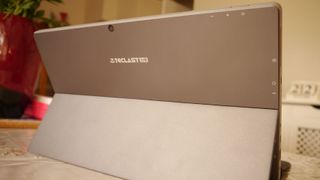
We reviewed the Jumper EZpad 5S, one of many such products that mimic the Surface 3. While that one fell short of matching the Surface 3’s innards, there’s another competitor that stands a better chance of toppling Microsoft’s best-selling convertible.
Enter the Teclast Tbook 16 Power, a Surface 3 clone with a couple of nice features thrown in. Teclast is not a completely unknown quantity as we reviewed another Windows tablet from the outfit a few months ago.

This model costs as little as £265 (about $325, AU$430) direct from online Chinese retailer Gearbest where it was cheapest at the time of writing.
(These costs are exclusive of any taxes that may be levied by HMRC or the courier companies on behalf of the vendor. Want to buy tech from online Chinese retailers? Read this first.)
Visually, the tablet makes no secret of where it gets its influence. The multi-position kickstand is a clear nod to the Surface, as are the chamfered edges, the magnesium-aluminium alloy back and the magnetic keyboard connector.
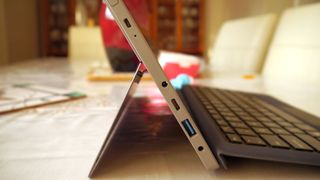
At 303 x 179.5 x 10mm, it is a chunky piece of technology, but is still reasonably portable even with the optional keyboard attached. The Tbook weighed in at just under 1kg which is acceptable for such a device.
You’ll find the connectors on one side of the tablet, with the power button and a volume rocker on another. A pair of speakers can be found on the other shorter side of the Teclast device. The bezels are rather substantial, as expected, to accommodate the average user’s digits. All in all, the tablet does feel solid, with not much to differentiate it from Microsoft’s product.
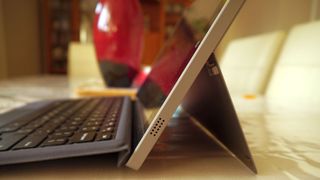
But there are some significant differences between the TBook 16 Power and the Surface 3. Microsoft’s tablet adopts a 3:2 ratio for its 10.8-inch screen, displaying 1920 x 1280 pixels, while the Teclast slate goes for a more classic 16:9 aspect ratio with fewer pixels to display (1920 x 1080) on an 11.6-inch display. That translates into a lower pixel density, but there’s not much between the two screens when you look at them in the real world.
Both convertibles use an Intel Atom x7-Z8750 system-on-a-chip. With four cores, it has a base clock speed of 1.6GHz but can overclock to 2.56GHz under load.
Compared to the weaker Atoms like the Z8300, this CPU is faster by as much as 50%, especially if GPU compute is required – that’s thanks to the Intel HD Graphics 405 graphics subsystem that’s paired with the CPU.
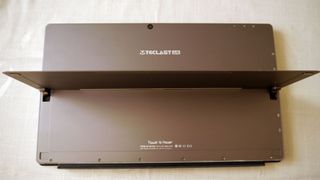
Where the Teclast trounces the Surface 3 is when it comes to the amount of system memory. By default, it comes with 8GB of RAM, whereas Microsoft’s tablet comes with either 2GB or 4GB. Remove the obligatory ring-fenced shared graphics memory and you’re often left with far less available RAM to play with – which can result in stuttering and system freezes.
For the rest of the hardware spec, though, the Tbook 16 Power lags behind its main rival. It has a 2-megapixel front-facing camera and a 5-megapixel rear one, 64GB on-board storage (Hynix HCG8e eMMC), along with 802.11n Wi-Fi (no 802.11ac here).
As for ports, you get one USB 3.0, one USB Type-C, one micro-HDMI, one audio jack and a microSD card slot.
An 8,500mAh battery powers this tablet, which is bigger than the one supplied with the Surface 3 (7,270mAh), but battery life, at around five hours (playing a YouTube video with brightness on 100% and default power settings) should have been better. It’s also a shame that the power supply unit, a 5V/3A model, comes with a proprietary plug which means yet another DC input port.

Having a microUSB one, for example, would have meant that you could reuse an existing USB power supply from a smartphone. Charging might take a bit longer but the convenience makes up for it.
As with the other Teclast tablet we reviewed, the Tbook 16 Power offers a dual-booting option: Windows 10 Home and Android 6.0.1. You cannot switch between the operating systems on-the-fly and instead need to reboot to do so.
As is the case for so many Windows devices coming straight from China, this one features an already-registered Windows installation with no password and Admin as the login.
The keyboard attachment is a clone of the Surface 3 Type Cover but comes at a fraction of the cost. The other difference is the layout of the keyboard – this one actually has a gap between keys. It fits within seconds, and overall this is a great keyboard offering some decent feedback, but the touchpad should be much bigger and far less rectangular in shape.
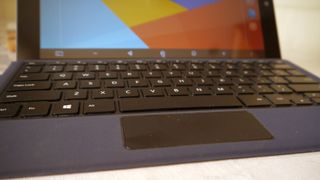
Early verdict
This Teclast tablet performed well on our benchmarks, significantly outpacing any devices based on the Atom Z8300. While it is neither at the level of the Pentium-N series or the Core-M for that matter, it is still a big improvement on the abysmal numbers the slowest Atom CPUs have delivered in the past.
There is no real competition at this price. The Asus Transformer Book T100HA is the closest we’ve seen but while it has 64GB storage and a similar price, its screen is HD only, the keyboard is too small for a decent typing experience, and worst of all, it has only 2GB of RAM.
This stylish convertible tablet is a great example of how Chinese retailers are quietly moving upstream with more expensive devices.

Désiré has been musing and writing about technology during a career spanning four decades. He dabbled in website builders and web hosting when DHTML and frames were in vogue and started narrating about the impact of technology on society just before the start of the Y2K hysteria at the turn of the last millennium.
What is a hands on review?
Hands on reviews' are a journalist's first impressions of a piece of kit based on spending some time with it. It may be just a few moments, or a few hours. The important thing is we have been able to play with it ourselves and can give you some sense of what it's like to use, even if it's only an embryonic view. For more information, see TechRadar's Reviews Guarantee.
